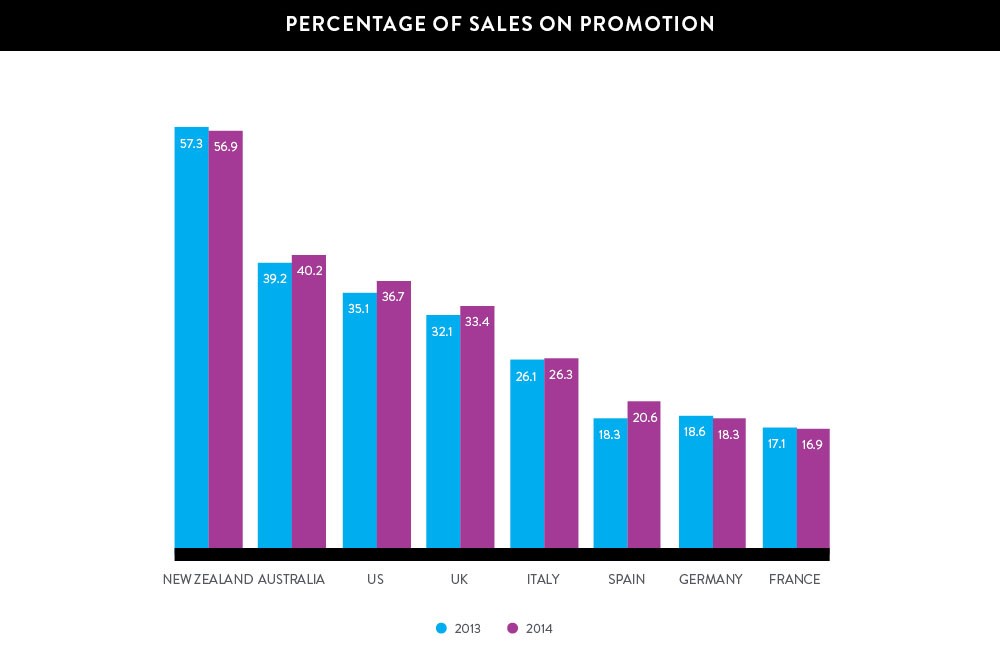
In marketing ‘promotion’ is one of the 6 P’s, a basic element of the marketing mix along with ‘people’, ‘product’, ‘price’, ‘place’, ‘promotion’ and ‘performance’. The main objective of a promotion is to raise customer awareness of a new product to gain acceptance in the market, or a new brand to position it amongst its competitors and create consumer loyalty. Recent research shows that Australia, along with New Zealand, has become retail promotion capitals of the world, especially in the Fast Moving Consumer Goods (FMCG) category. Australia has become reliant on using promotions as a strategy, meaning over time Australians have become accustomed to promotions thereby diminishing its effectiveness in the market.
This is represented in the graph below:

Source: AC Nielsen
Once a price is set, the value is set. If the price is reduced the value of your brand in the eyes of your target market is reduced. For example, if the initial price is discounted then the client is unlikely to return if the next time the price is higher. Discounting often will also limit your brand’s ability to raise prices in the future.
Here are a couple of tricks to overcome this:
1. Complimentary is better than discounted
Let the client test your offer and see the value, rather than giving them a pre-determined value beforehand. “Since consumers believe the value of a free product is likely to be consistent with the value of the purchased product, pairing a free product with a high-end product may very well increase perceptions of its value” write authors Palmeira and Srivastava. The authors go on to explain that this can also work by providing a complimentary item along with the selling item. So instead of devaluing the product by lowering the price, you’re offering something in addition, that sounds more positive to the client and increases your overall brand’s value.

Complimentary is better than discounted.
2. Keep your promotions simple
All clients will be excited by a promotional offer. However, a reward system that proves too difficult or deal that’s too complicated to redeem will dampen their spirits and you’ll loose your clients’ loyalty.
3. Be sparing with promotions
The problem with offering deals too often is that clients will begin to believe that these promotional prices are what your brand is really worth. According to marketing research, a business owner needs to be able to tell discounting and devaluing from each other. Sales now and then are fine, as long as you have a legitimate reason for offering deep discounts.
Only use promotions to raise awareness of new products or when getting rid of old stock. Make sure your promotions have clear intentions and an expiry period to create a sense of urgency. If necessary, make promotions relevant to your brand, by timing your promotions with special dates in the year.
4. Invest in your brand
Overall the value of your brand is determined by how much you are willing to invest in it. Constructing effective promotional campaigns that conveys high value credibility, uniformity and experience is a sophisticated strategy of psychology and science.Promotional products or merchandise are a great way of creating a tangible experience for new or existing clients. However, using cheap products can reflect negatively on your brand image. These may provide a short term boost to sales, but to create longer and stronger relationships with clients, investing in quality merchandise together with your promotional campaigns will lead to more sustained success for your brand.
Call us on 1800 PROMOS (776 667) for ideas on how branding strategies and merchandising can work for your next promotional campaign.


